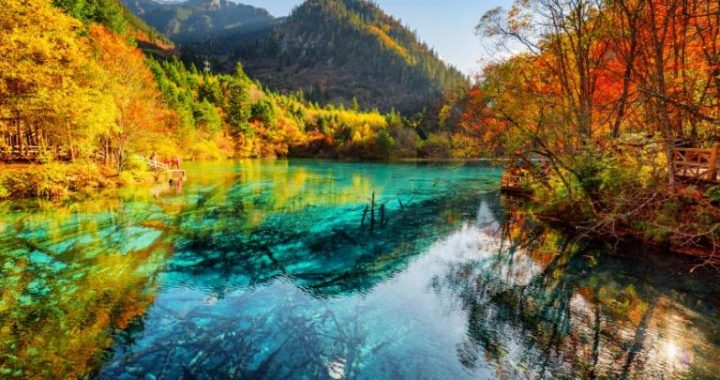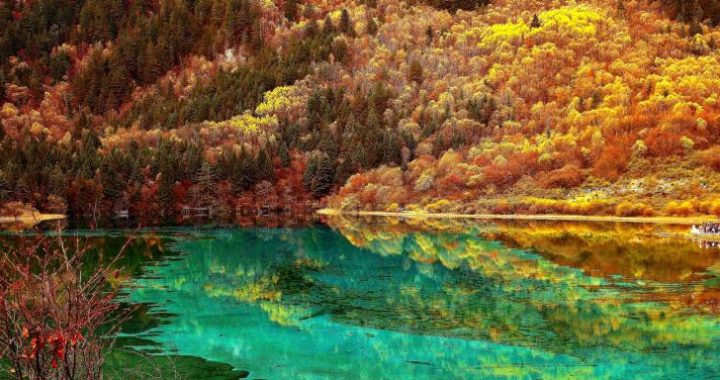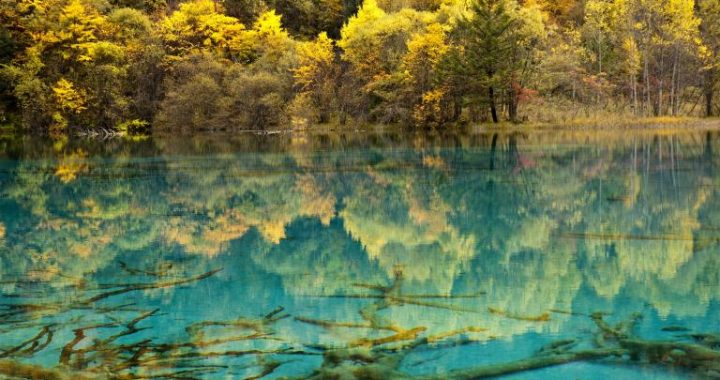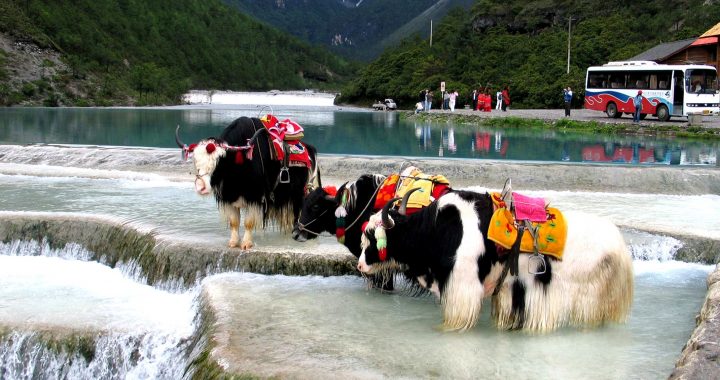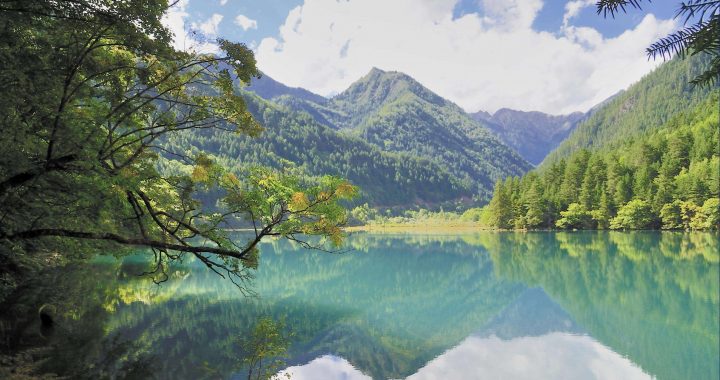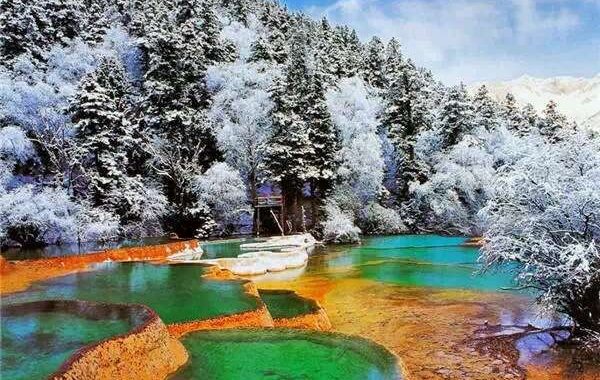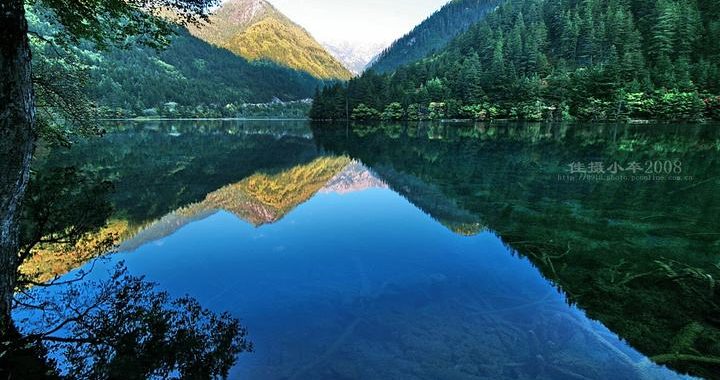Jiuzhaigou and Huanglong’s Picturesque Parklands
5 min readHeritage:Jiuzhaigou Valley Scenic and Historic Interest Area,Huanglong Scenic and Historic Interest Area Sprinkled with an incredible palette of natural colors,Sichuan’s UNESCO listed nature reserves are home to rare animals and plants as well as the Baima Tibetan minority.
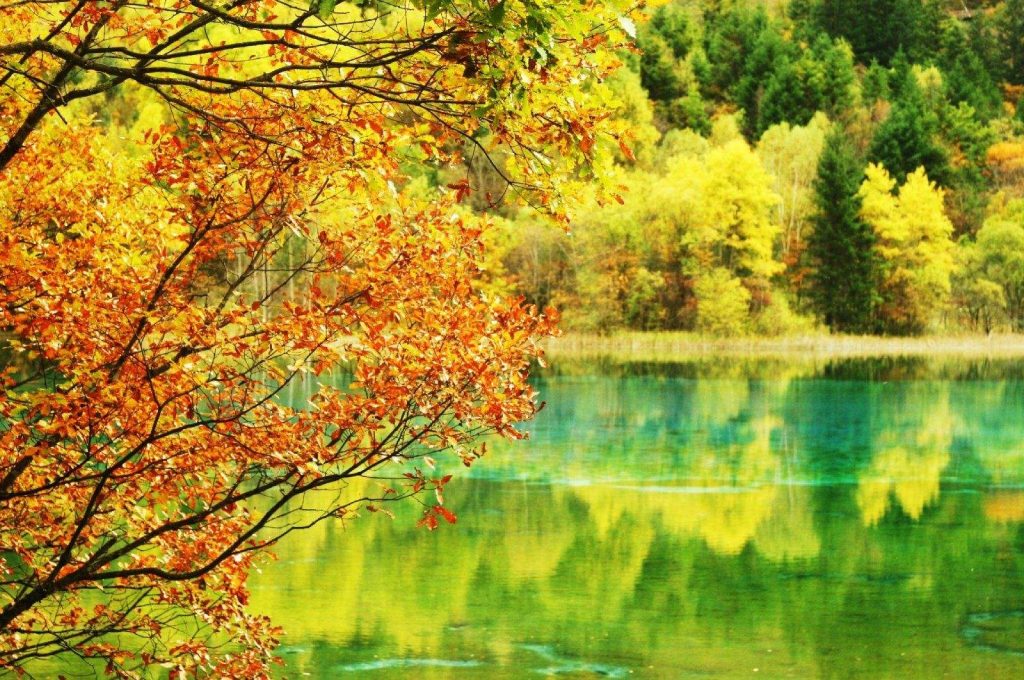
Jiuzhaigou’s scenery is fother Wature at her best.
Jiuzhaigou’s patchwork of shimmering lakes was discovered when scientists trailing some pandas,observing their habitat and migratory patterns,followed the pandas into this scenic wonderland.Scientists believe the lakes were formed at a time when the earth was between ice ages.As the global climate warmed up,calcium carbonate in the water-the compound is the stuff of chalk and limestone-aggregated around other existing objects and eventually formed the milky white,lunar shapes we see today in Jiuzhaigou’s lakes.Butin fact the sheer beauty of the lakes and the vibrancy of the colors defy explanation,and the scenery leaves most breathless.Yangdong Hotel Jiuzhaigou Hotell.
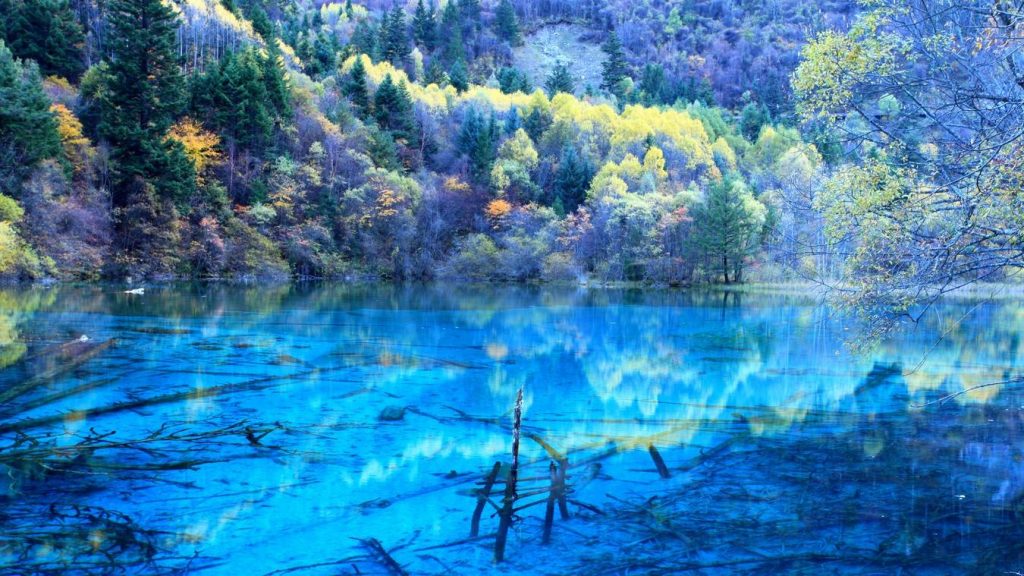
Lang Lake
Cut into the mountains in the shape of a”Y,”three valleys,Shuzheng,Rize and Zechawa,extend over 30 miles(50 km)into three main zones.Pathways and roads have been laid in the valley areas and buses ferry tourists from one section of the park to another.
The average height of the hills overlooking the valley is around 5,900 feet(1,800 m),but the elevations here are gentle,making for easy strolls as well as strenuous,longer hikes.
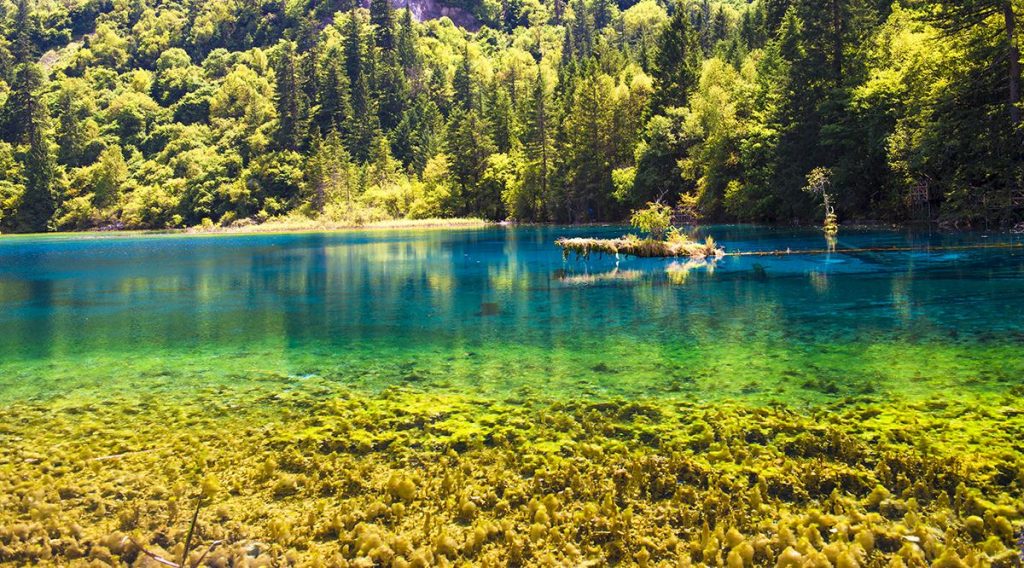
Nearest to the park’s entrance lies the Shuzheng Lakes(shizheng qunhai).of the 114 lakes in Jiuzhaigou,only Shuzheng,Rize Valley,Zechawa and Zharu Valley are open ttourism.Shuzheng is the largest of the lake areas,so if time is limited,this is where you should spend it.
Legend says that the lake water is colored by the substance of fairy maidens.The amazing hues of the lakes vary from blue and green to light brown,dark gray and light purple.According to science,the dazzling colors come from the aquatic plants in the lakes,the different temperatures of the water and how it refracts light and the amount of calcium carbonate in the water.Whatever the reason,there’s no doubting that the gods and nature have been exceptionally kind to Jiuzhaigou.
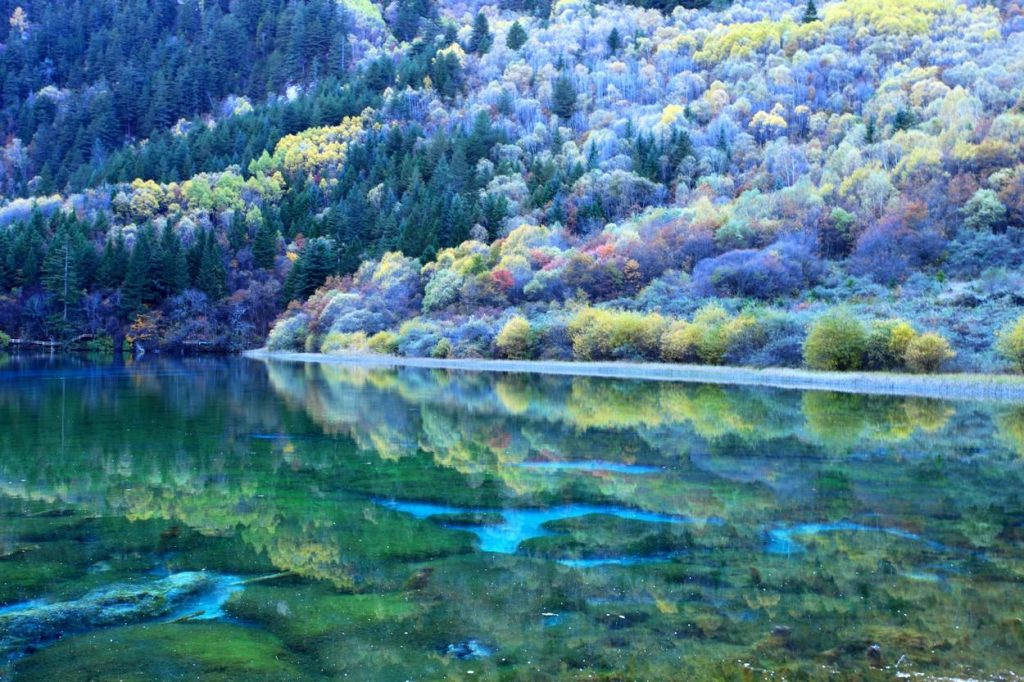
Jiuzhaigou is indeed all about color.Set in the Aba Autonomous Region(aba zangzuqiangzu zizhizhou),it may take more effort to see than most of Sichuan’s other sights-but understatement is impossible when it comes to natural scenery.Listed by UNESCO as a World Natural Heritage,there is an airport in nearby Songpan,cutting to less than an hour the 280-mile(450 km)from the provincial capital of Chengdu.The rising number of tourists at the site may be expected to rise much faster with the direct air connection but Jiuzhaigou is large enough to allow for introspective hikes off the more-beaten paths.
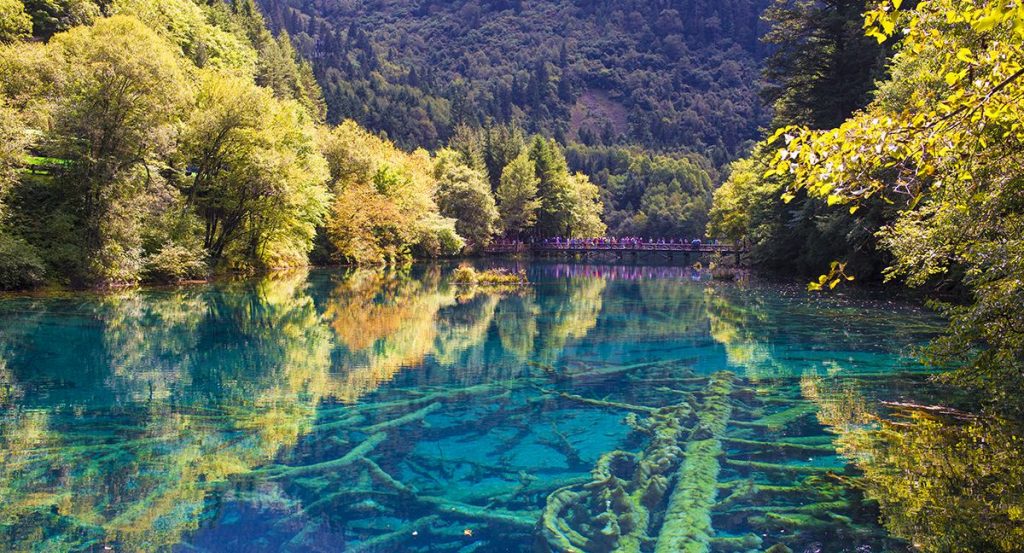
The name Jiuzhaigou refers to the nine Tibetan villages scattered throughout the valley.The Baima tribe of Tibetans live here-farmers and hunters,they grow corn on terraced mountainsides and farm bison.The Baima are distinct from other Tibetans in thatthey have their own script for their language.They have their own religious writings too and worship mountain gods as opposed to being part of broader spectrum of the Tibetan Buddhism.
Quotes
“It’s like visiting an art gallery of nature.There are so many bright,natural colors-that’s the most awe-striking feature of the place.”
“To really appreciate the serenity of the forests and the higher hills and mountains,you need to walk out on your own,and that’s something you can’t really do in a day.”

It’s impossible to pick a favorite among the many lakes,considering the natural beauty of Jiuzhaigou.Shuzheng,the largest and most accessible of the three lake-specked valleys,is an ideal place to begin your exploration.Spread out over hundreds of acres,the main attractions in Shuzheng Valley are the Shuzheng and Nuorilang Lakes(nuorilang qunhai ),Dragon Lake(wolong hai)and Spark Lake(huohua hai).The first two are stepped lakes,dropping in stages over mountain ledges with crystal clear water cascading from one tier to the next.Water music rarely sounds as sweet.

The milky yellow dike at the center of Shuzheng lake is clearly visible through the clear water,looking like a dragon crouching below the lake.Shuzheng Waterfall meanwhile bangs and crashes its way down the hillside before plummeting into the lake.
All around,forests of many colors are reflected in the water.Many endangered animalssuch as the giant panda live in those woodlands,out of the reach of all but the most energetic tourists.Tastefully created wooden paths cut through the lower slopes of the valley and comfortable pavilions offer a respite to weary legs.On less crowded days they’re also perfect picnic points.

Calcium carbonate coatings on dead trees on the bed of the lake resemble abstract art creations in their twisted,yellow shapes.Add to the color mix the turquoise,saffron and crimson colors of vegetation in the lake and the tree leaves reflected on its surface and you’ve got an image more colorful and pretty than a George Seurat painting.Sketch pads can often be spotted here,mostly on the knees of foreign visitors-there’s plenty of justification for taking an easel and box of paints up here Worthy of at least a photo are the small pockets of wildflowers,mostly rhododendrons,which cluster in Jiuzhaigou’s forests.There’s also an abundance of wild fruit:apples,hawthorn berries,apricots,strawberries and other,exotic-looking berries.The plentiful bamboo shoots feed a precious resident,the panda.Walking through the lower forest areasjealousy is a reasonable reaction to the idyll enjoyed by the panda and his hundreds of neighbors who live on protected ground here.

Crystal clear waters reflect the autun tres.
Leaving the lakes,follow the trails leading to the Shuzheng stockade or village,home to a settlement of Baima.The paths are lined with prayer flags of variously colored clothwith Buddhist religious scripture printed on them.At the end of a day’s walking,a bowl of noodles and several cups of Tibetan buttered tea,made with yak milk,will give you a shot of energy,enough to view the setting sun as the day draws to a close.
